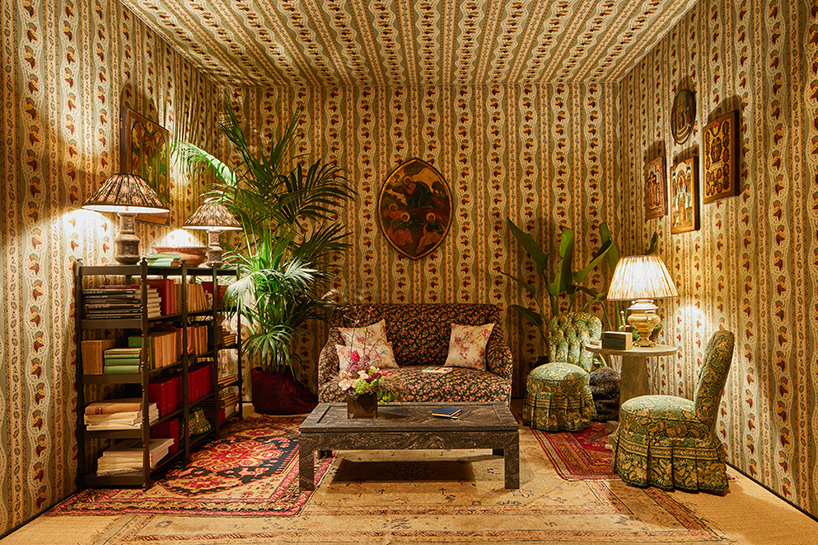An interior designer works on the consumer’s needs to create a visually desirable area. Clients vary from owners to large organizations. The spaces that the interior designer designs have a huge variety, from easy domestic interiors and outdoor decors to lavish hotel interiors. All interior designers need to have an experience in the utilization of space along with attractive decor. The area created needs to meet safety necessities additionally.
An interior designer’s task is to have innovative intelligence and the capacity to suppose outdoors the field. In these days’ instances, most of people seek advice from interior designers to decorate their houses and workplaces. They ought to create an aesthetically pleasing decor that considers the customer’s needs, money allocated, and available area.

There are 3 ways to become an Interior Designer in India.
Option 1
- Step-1 Complete 12th in any stream
- Step-2 students can opt for a degree course in B. Design
- Step-3 After completing B. Design students can opt for M.design in interior design
Option 2
- Step-1 Complete 12th in any stream
- Step-2 Students can opt for a degree course in interior design
- Step-3 After completing B. Design students can opt for master’s degree in interior design
Option 3
- Step-1: complete 12th in the science stream
- Step 2: students can opt for a degree course in Architecture (B.Arch.)
- Step-3: after completing B.Arch. students can opt for a master’s degree in interior design
Becoming an interior designer in India is a rewarding and creative career path that involves a blend of artistic flair, technical skills, and a keen understanding of spatial arrangements. Here’s a comprehensive guide on how to embark on this exciting journey.

Educational Pathway
The first step towards becoming an interior designer is acquiring the necessary education. While a formal degree is not always mandatory, it significantly enhances your credibility and knowledge base. You can start with a Bachelor’s degree in Interior Design, which typically spans three to four years. Several prestigious institutions in India offer specialized courses in interior design, IVS School of Art & Design is one the best institute that offers these courses.
These programs cover a wide range of subjects including design principles, color theory, space planning, material knowledge, and software skills like AutoCAD and 3D Max. Additionally, many institutions offer diploma courses and certification programs for those who wish to specialize in specific areas of interior design or for those switching careers.
Gaining Practical Experience
While education provides the theoretical foundation, practical experience is crucial for success in interior design. Internships and apprenticeships with established interior designers or design firms offer hands-on experience and industry insights. During these stints, you will learn how to handle real-world projects, interact with clients, and manage timelines and budgets. Practical exposure helps in honing your skills and building a professional portfolio that showcases your work and creativity.
Building a Portfolio
A strong portfolio is a key asset for any aspiring interior designer. It should reflect your design style, creativity, and technical prowess. Include a variety of projects in your portfolio, such as residential, commercial, and hospitality designs. Detailed sketches, 3D models, before-and-after photographs, and mood boards can help demonstrate your capabilities. Remember, a well-presented portfolio can make a significant difference in securing clients or employment.

Networking and Industry Connections
Networking is a vital component of building a successful career in interior design. Attending industry events, workshops, and seminars can help you stay updated with the latest trends and connect with other professionals in the field. Joining professional organizations such as the Institute of Indian Interior Designers (IIID) can provide additional networking opportunities, access to resources, and industry recognition.
Keeping Up with Trends and Technology
The field of interior design is ever-evolving, with new trends and technologies emerging regularly. Staying updated with the latest design trends, sustainable practices, and technological advancements is essential. Subscribing to design magazines, following influential designers on social media, and participating in continuing education courses can help you stay ahead in the field. Proficiency in design software and tools is also crucial, as most clients and firms prefer designers who can present their ideas through detailed and accurate digital models.
Legal and Business Aspects
Understanding the legal and business aspects of interior design is equally important. This includes knowledge of building codes, safety regulations, and licensing requirements. If you plan to start your design firm, skills in business management, marketing, and client relations are essential. Many designers also benefit from courses in entrepreneurship or business administration.

Pursuing Specializations
Interior design is a broad field with several areas of specialization, such as residential design, commercial design, hospitality design, and sustainable design. Specializing in a particular niche can set you apart from the competition and allow you to focus on areas you are passionate about. Advanced courses and certifications in these specialties can enhance your expertise and marketability.
IVS School of art & design offers the following courses in interior design.
- One year diploma course in interior design
- Two-year diploma course in interior design
- Three-year degree course in interior design affiliated with Subharti university Meerut
- Two years Master’s degree course in interior design affiliated from Subharti University Meerut
- Small term software course suitable for designers and architects to enhance their software skills
- Vaastu course for designers and architects.
Conclusion
Becoming an interior designer in India requires a blend of education, practical experience, networking, and continuous learning. By building a strong portfolio, staying updated with industry trends, and understanding the business aspects, you can carve a successful and fulfilling career in this dynamic field. Whether you aim to work with top design firms or start your own practice, the journey of an interior designer is both challenging and rewarding, offering endless opportunities for creativity and innovation.



